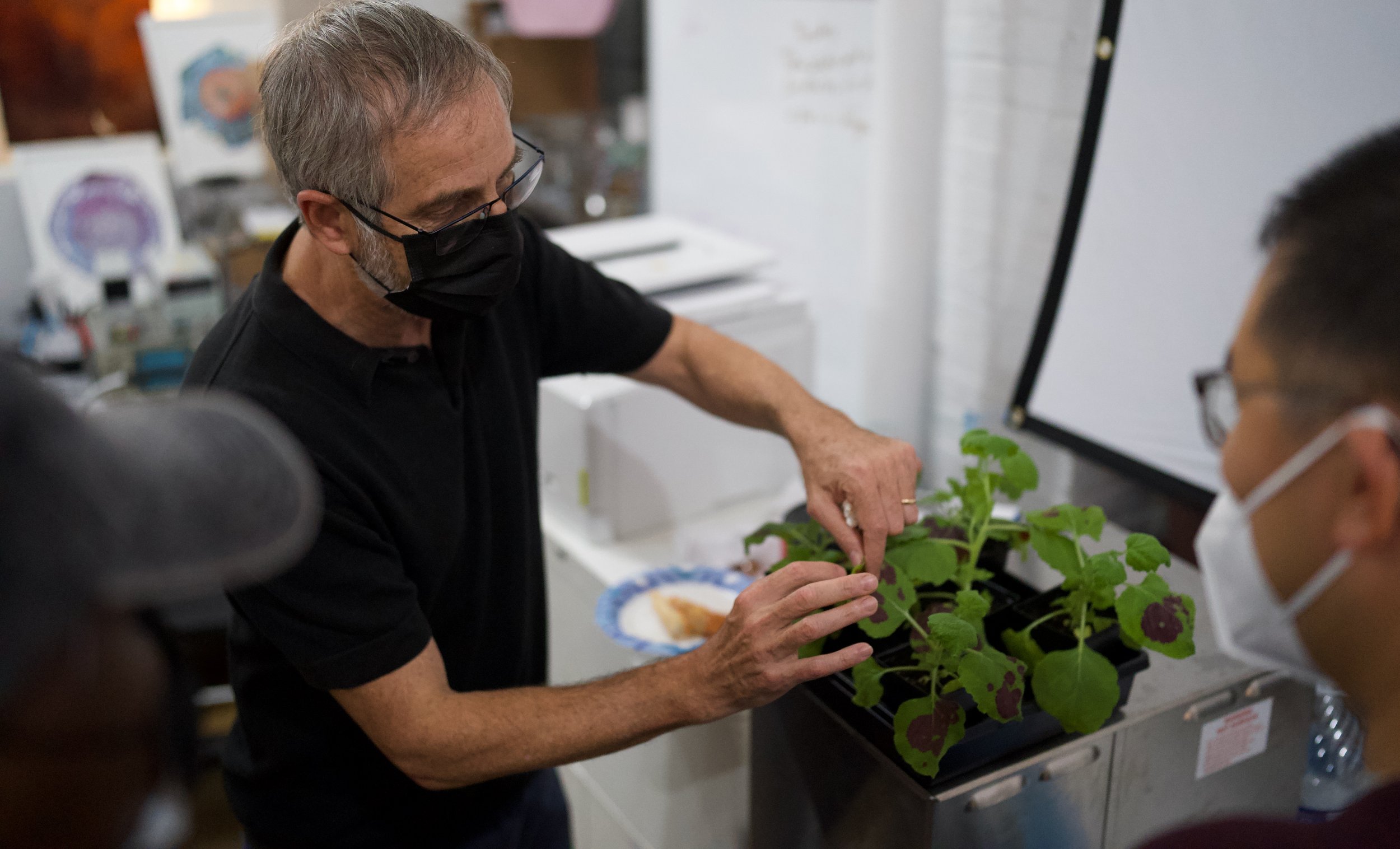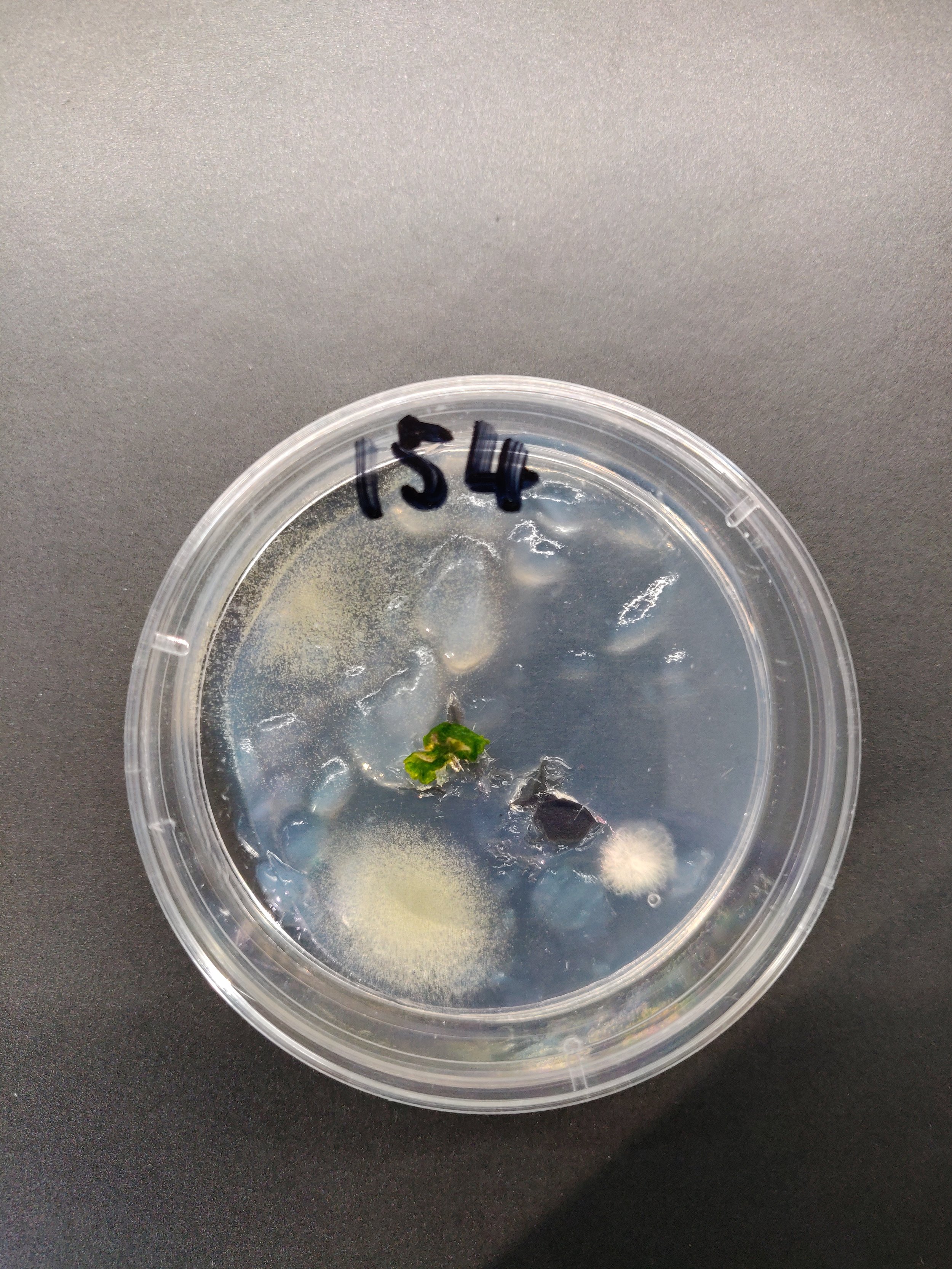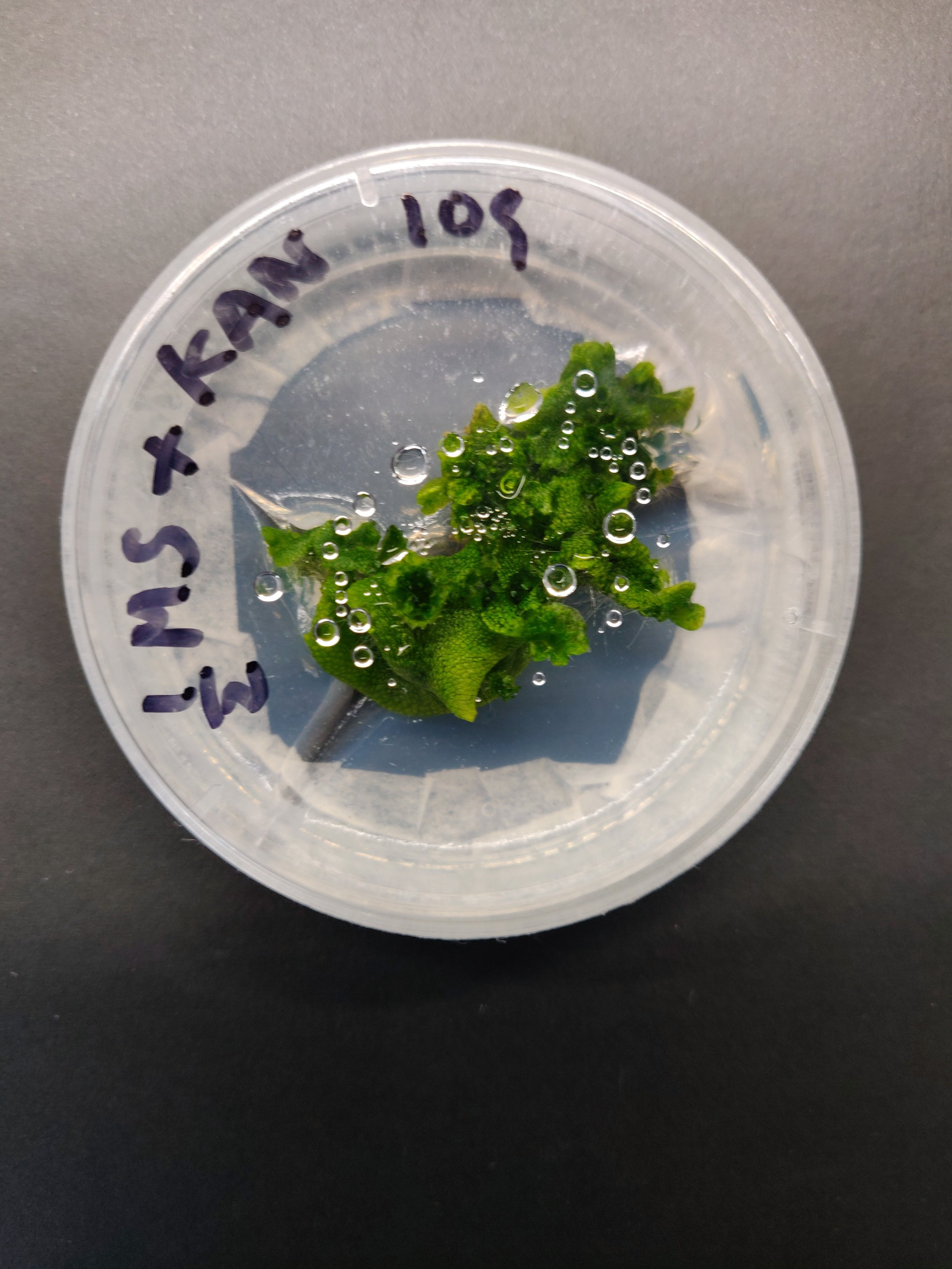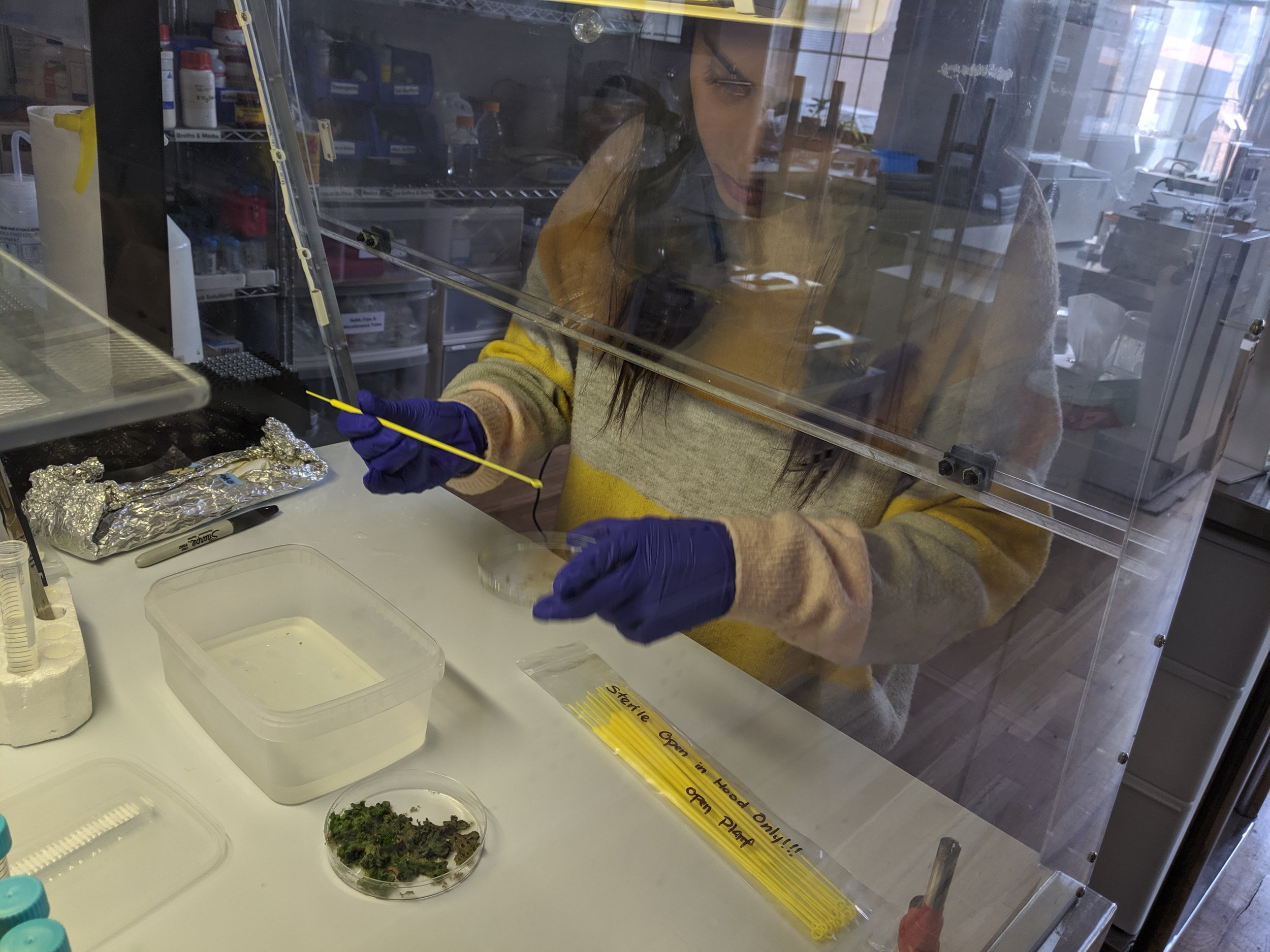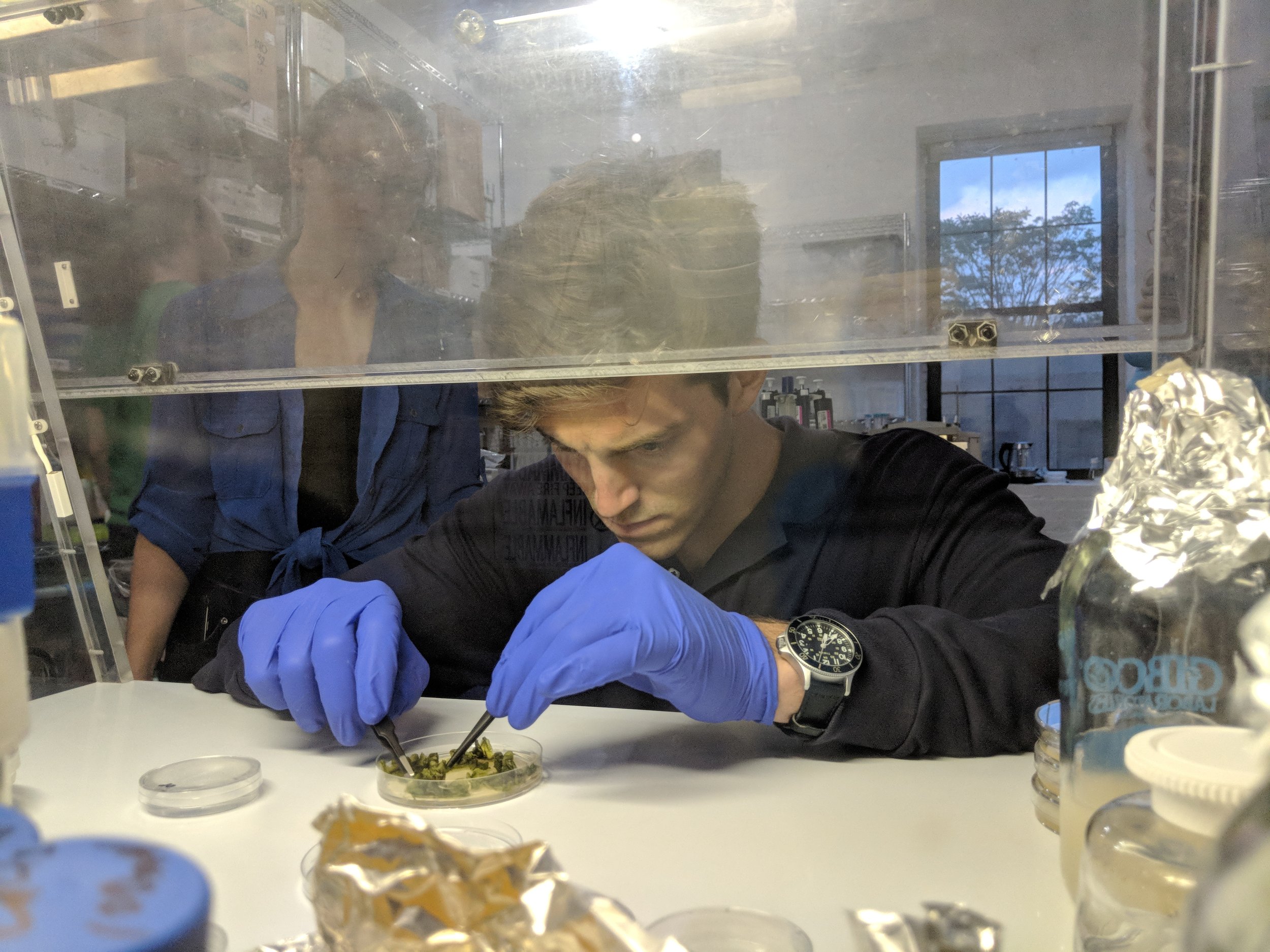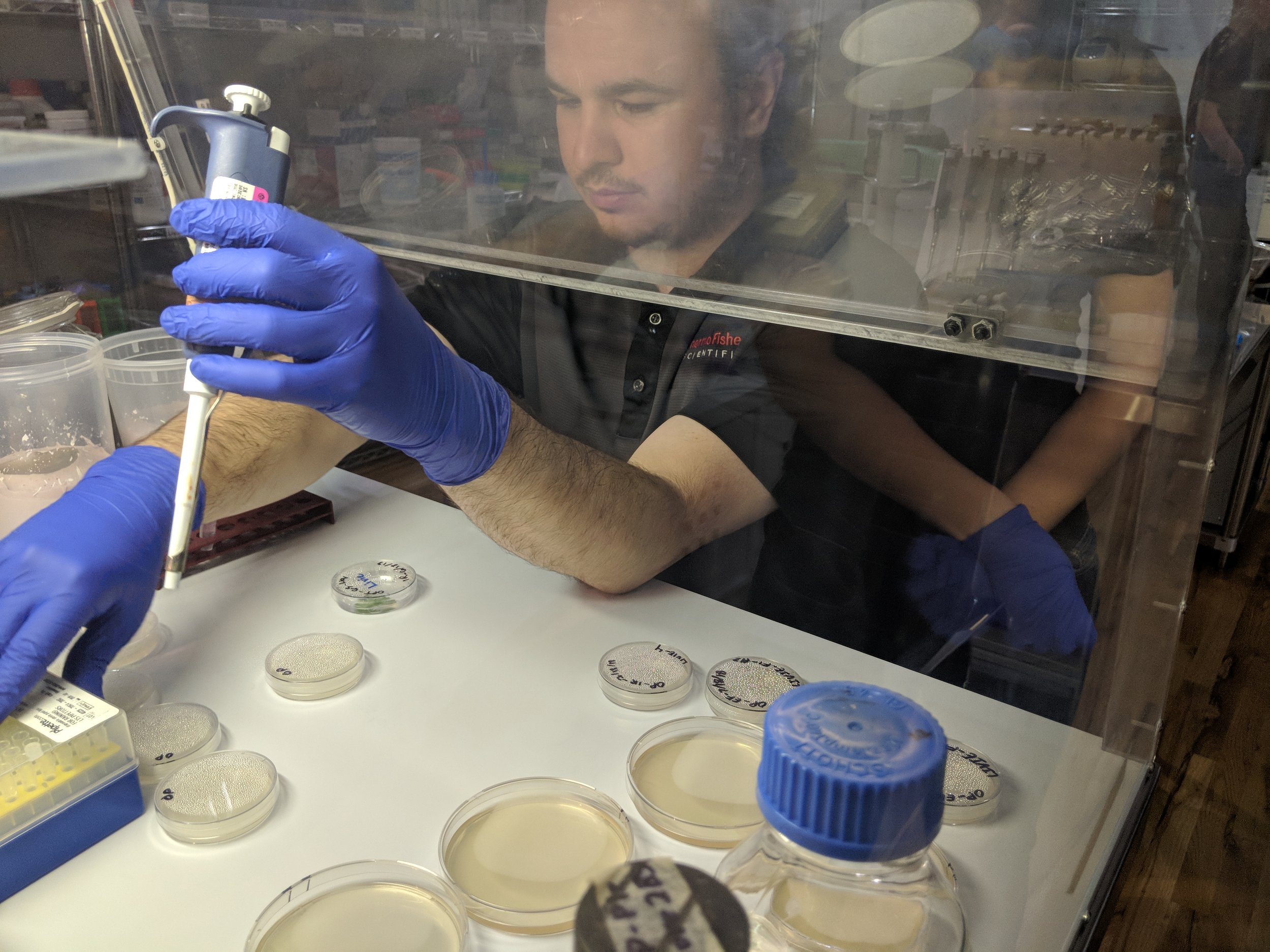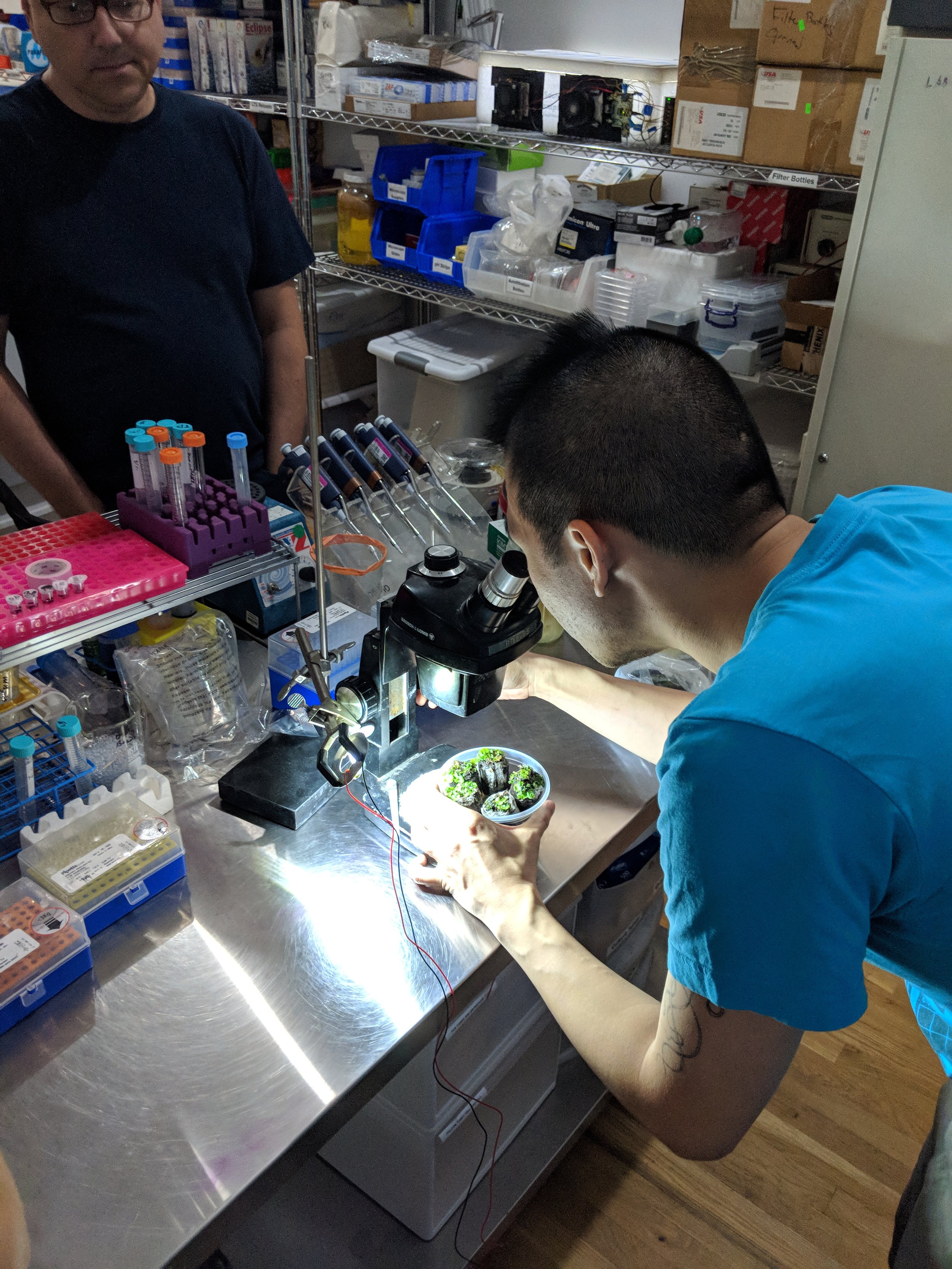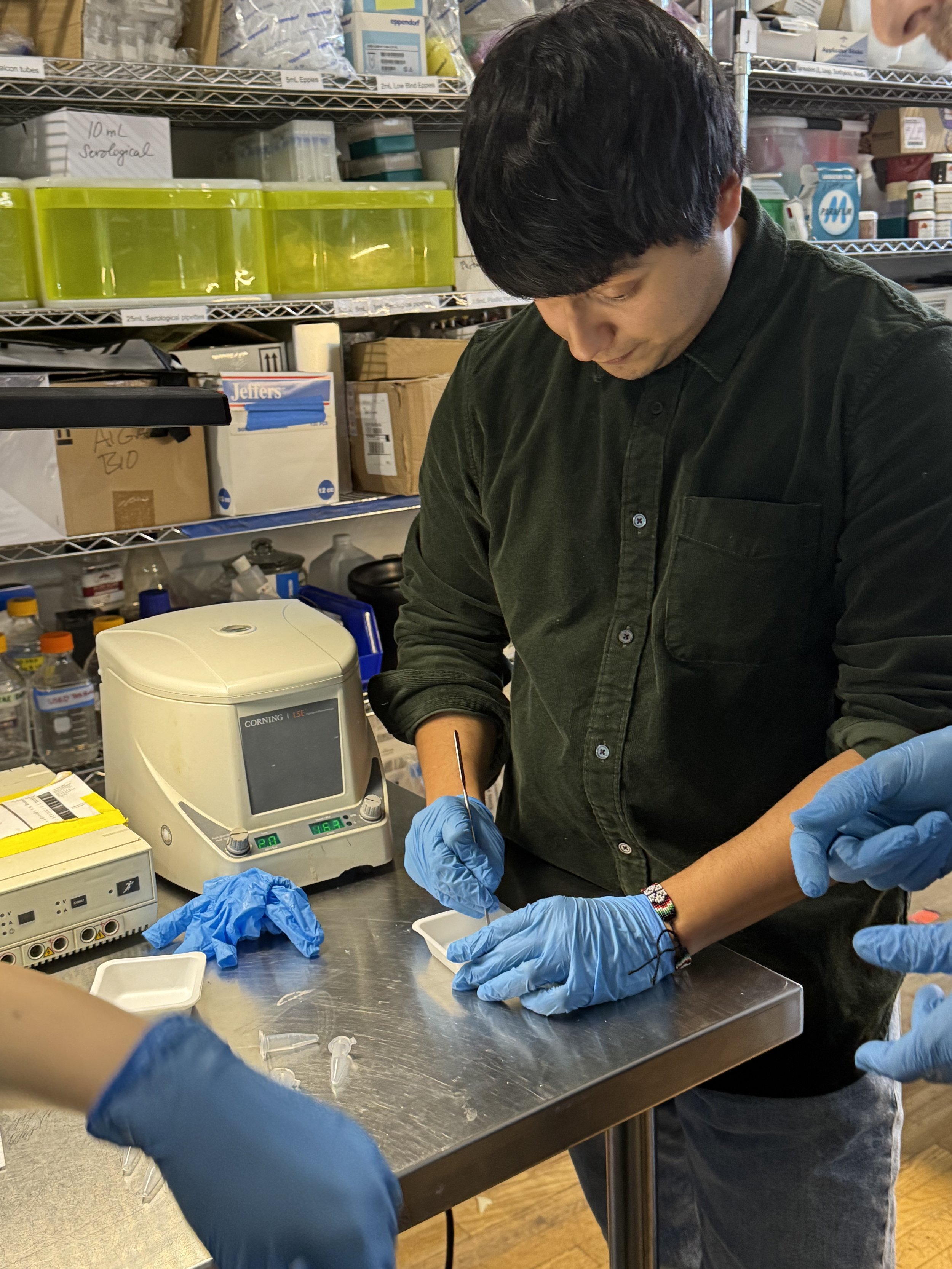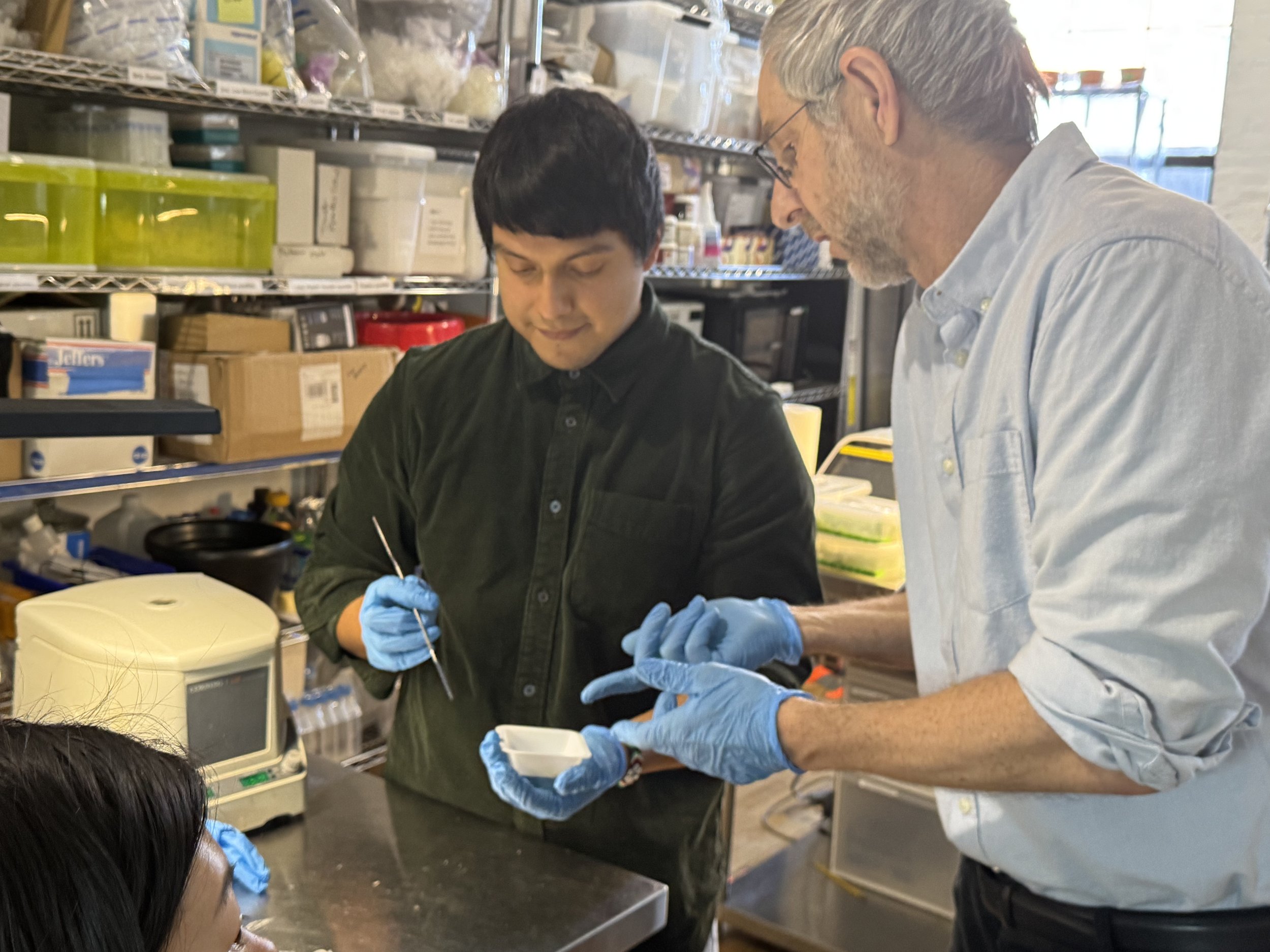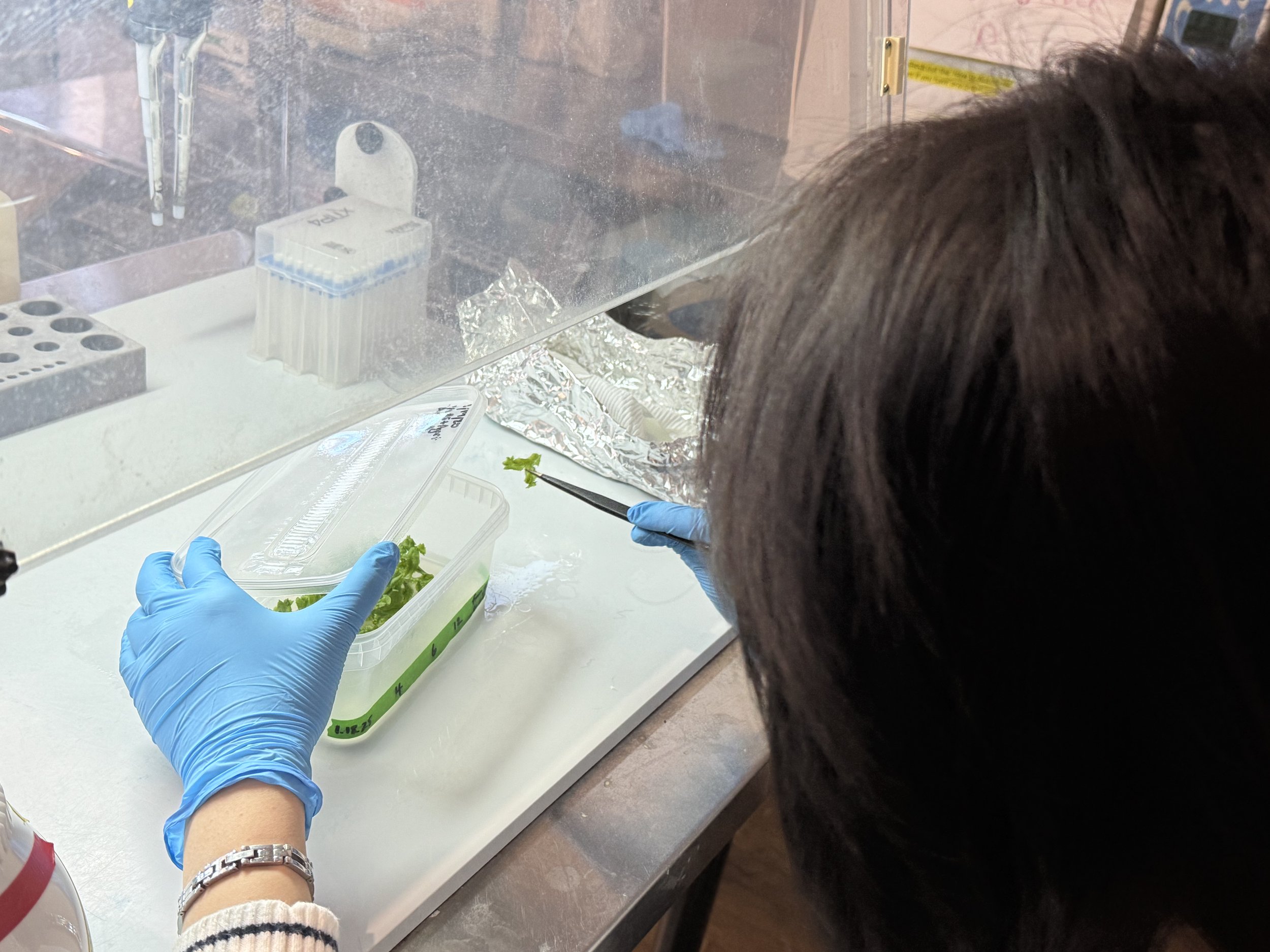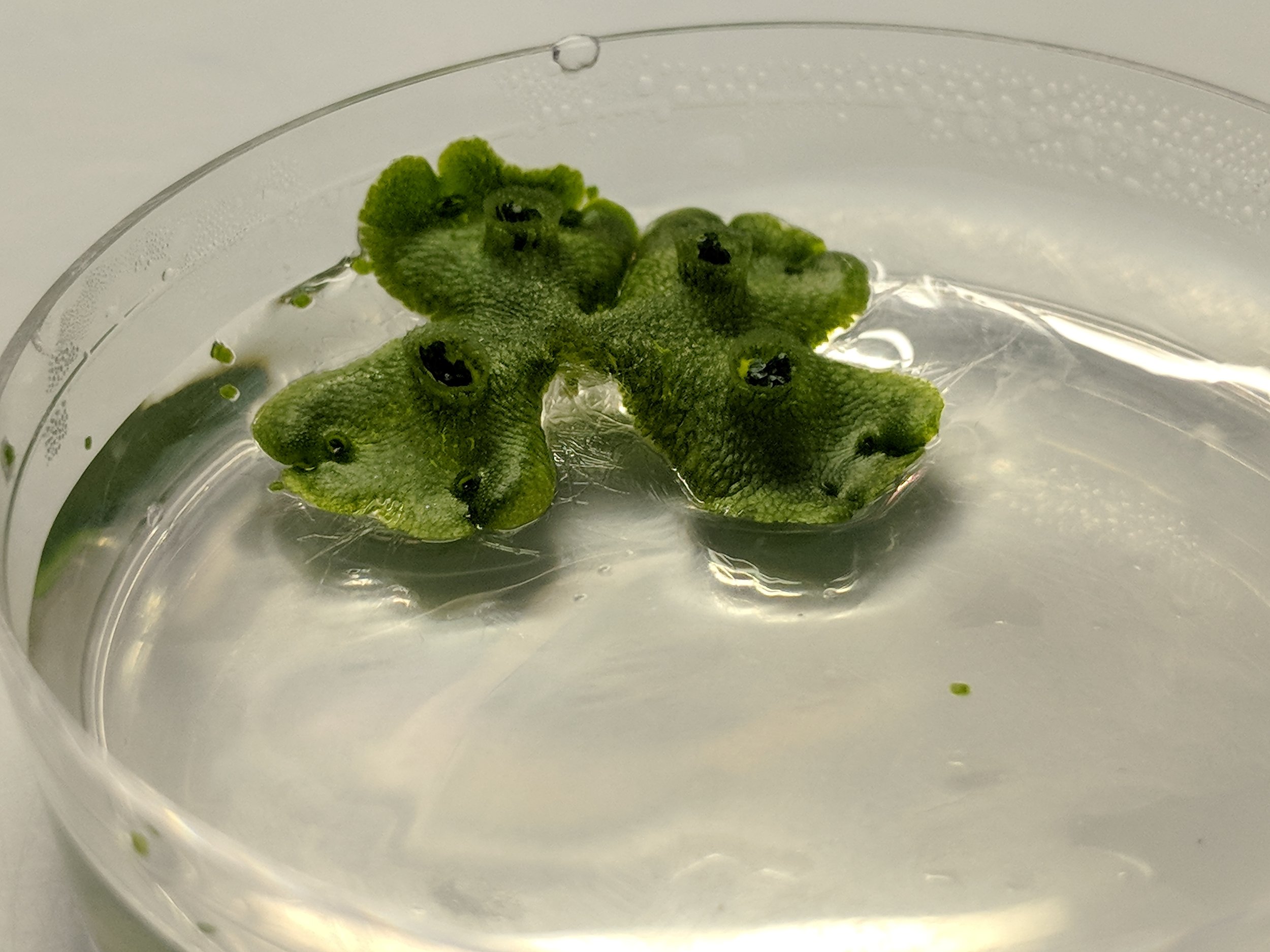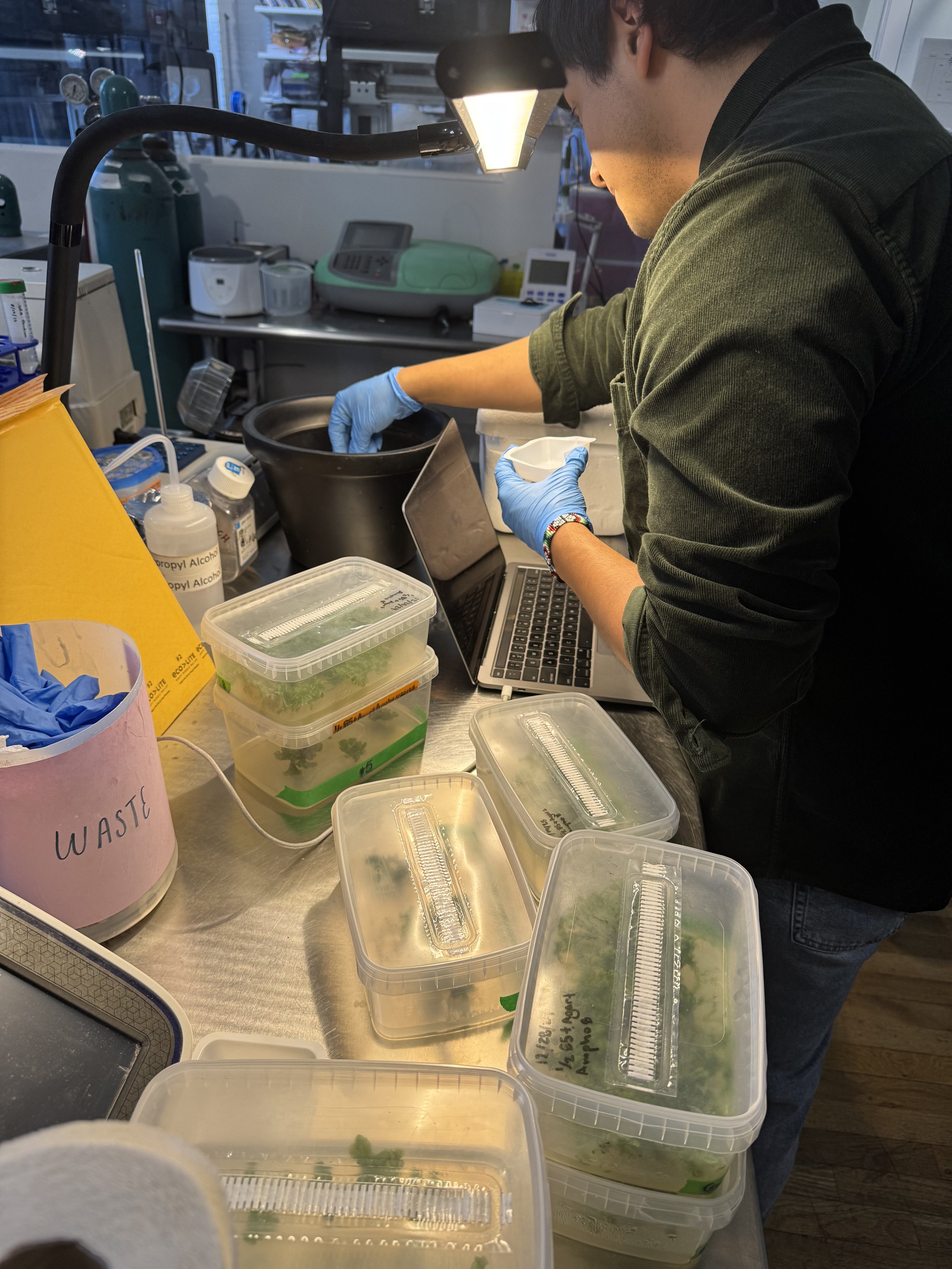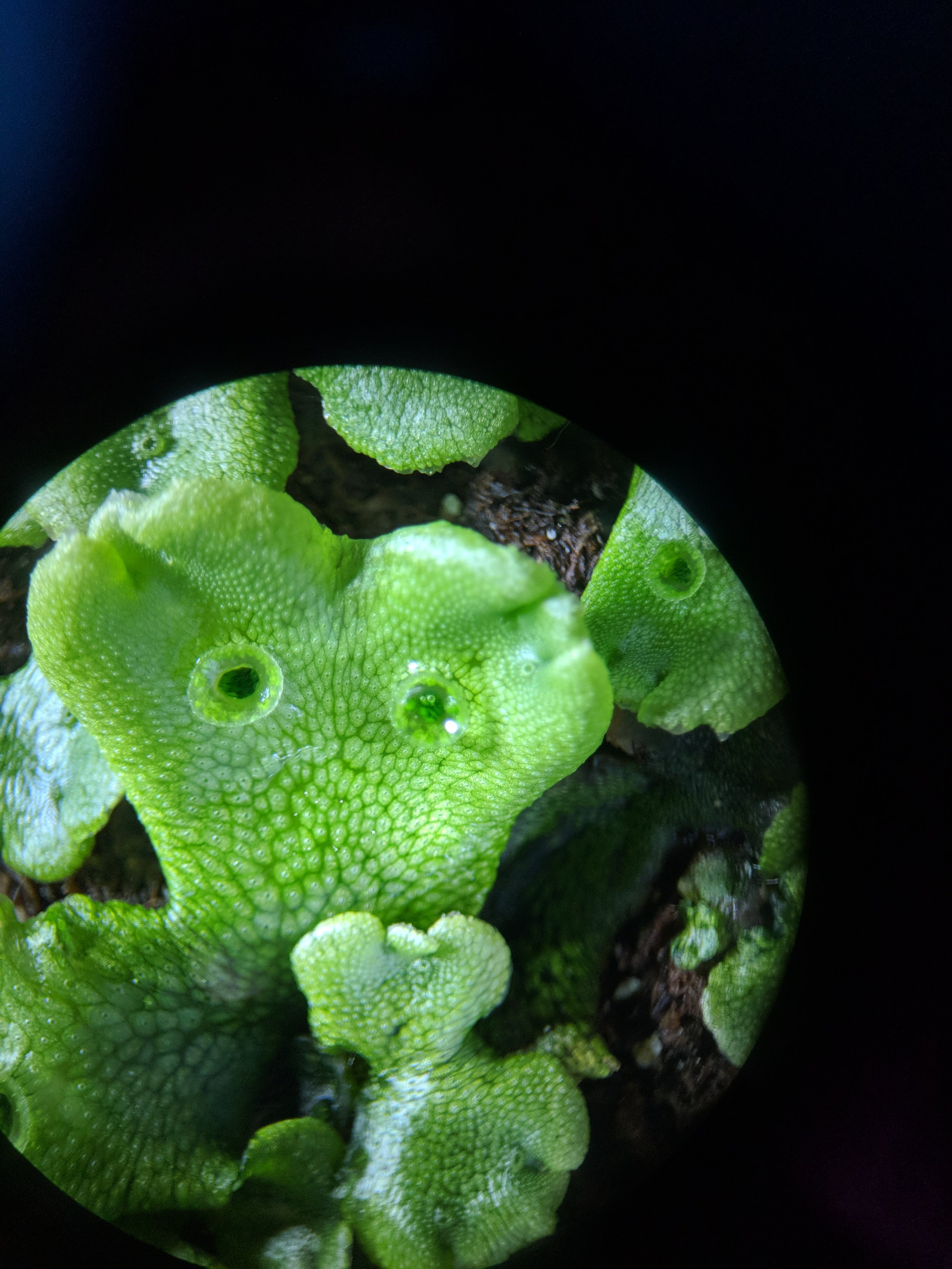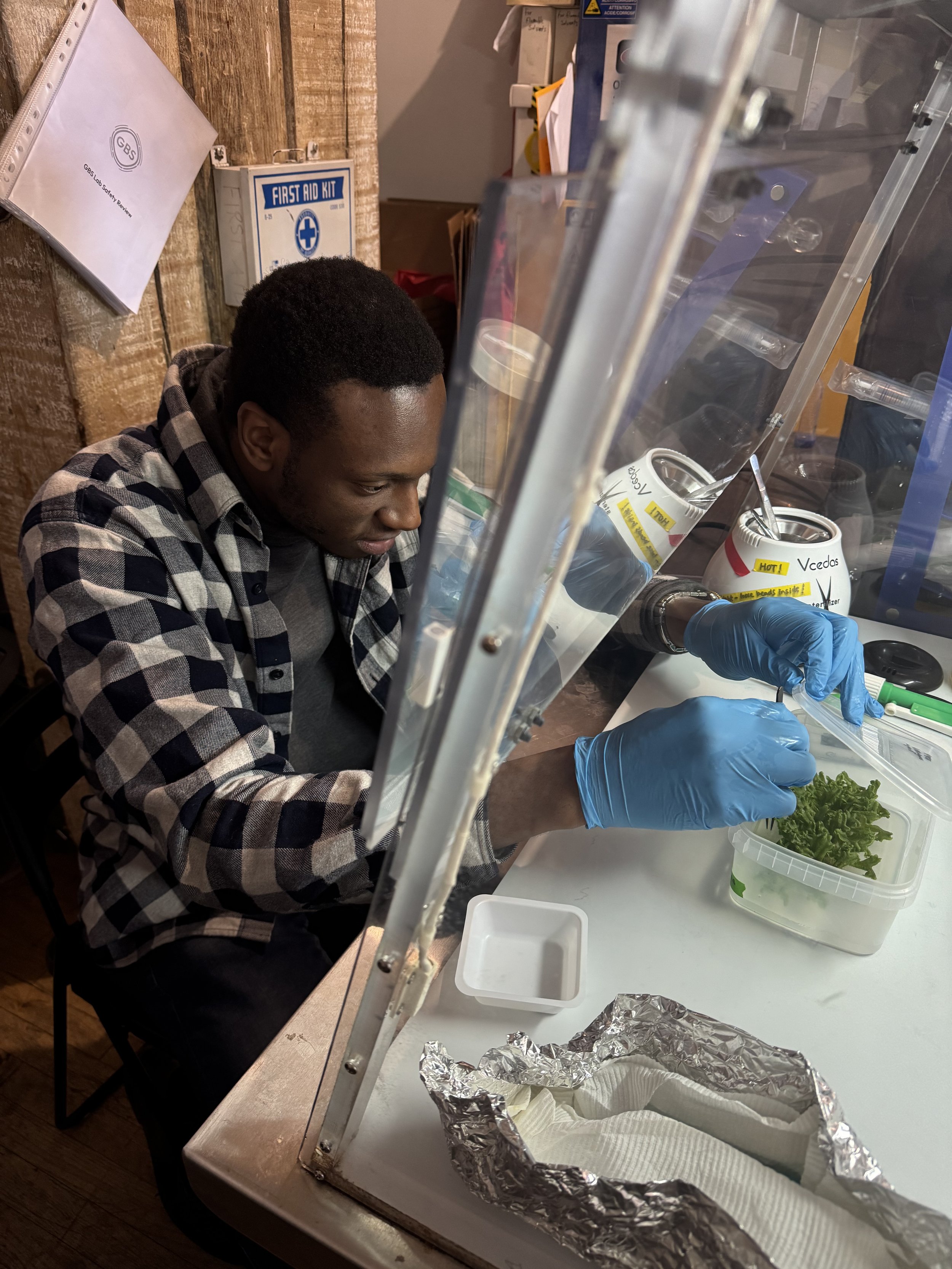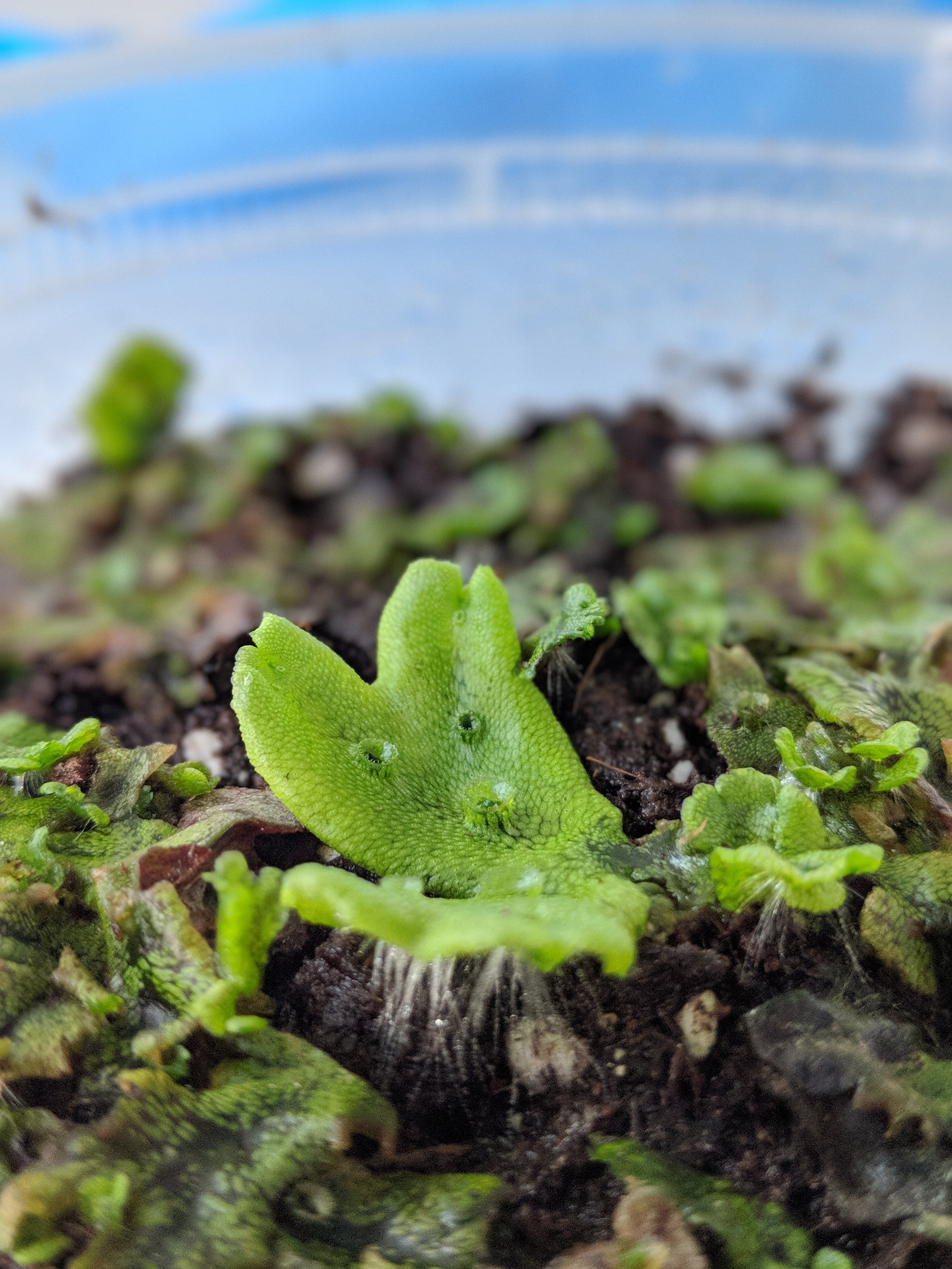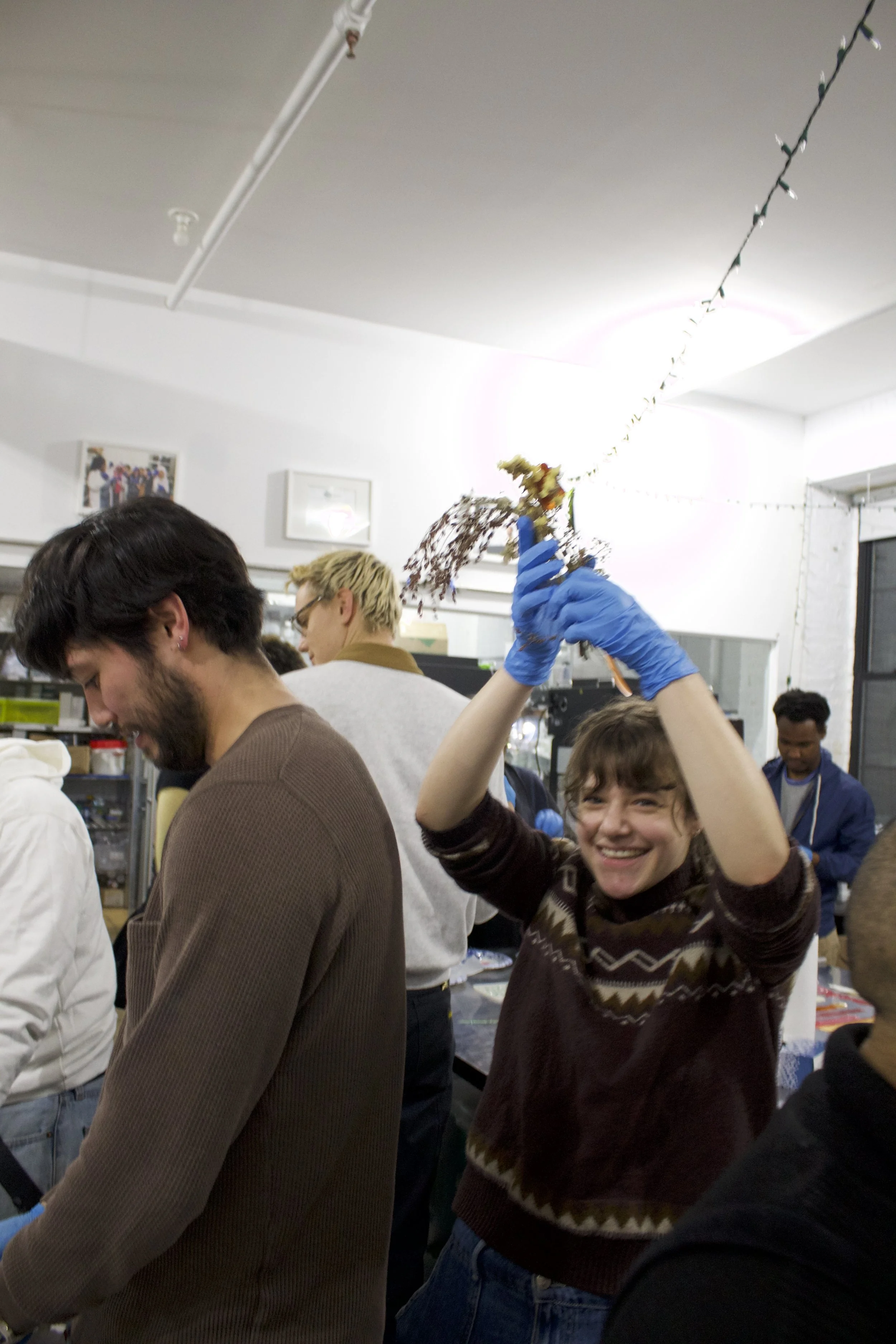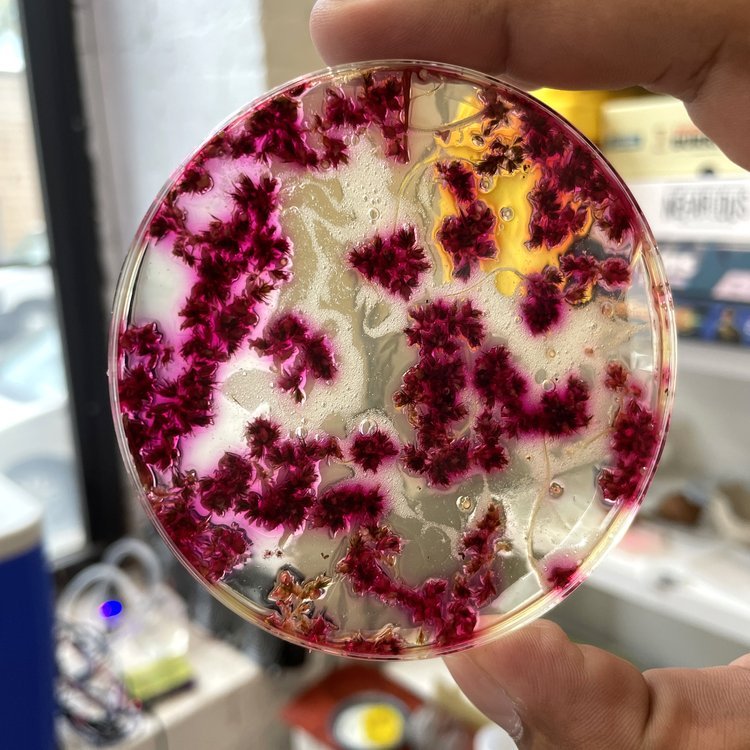Not sure where to begin? Community Projects are a great place to get started doing research in our lab, to meet other members, and to collaborate at the bench! Join us to see if one is the right fit for you.
About Genspace Community Projects
Community Projects are open-source group research and design projects facilitated by members of the Genspace community, and these projects are designed to enable interdisciplinary collaboration, mutual learning, and skill-sharing between Members.
Participants pay a lower fee to be members of Genspace and have the opportunity to explore advanced lab, computational, and design techniques in a welcoming, supportive and fun environment. Community Projects often provide a bridge for learners to move from direct instruction in our classes and workshops to more independent work. Members build knowledge and skills through applied practice and mentorship, preparing for the next phase of their life sciences journey. Community Project Members may participate in multiple projects.
Community Project Teams meet regularly at the lab and online to develop their projects with support from Genspace staff. Community Projects are designed with achievable outcomes in mind, moving at the pace of the Community Project Members as they learn, create, and grow.
Learn More About Our Community Projects
Open Plant Collaboration
Scientists have been engineering plants since the 1970s, but they have been increasingly used in synthetic biology because they can assemble elaborate proteins (eg antibodies) that other organisms just can’t. Genspace hopes to join an international consortium of research on the Open Plant Project to use liverwort M. polymorpha to generate complex proteins.
Project Description:
M. polymorpha has traits that make it ideal for bioengineering. Its small size and fast lifecycle, allows experiments to be carried out quickly and easily. We will start with the basics: cloning and propagating liverwort cultures. The first engineering aspect of the project will be to “domesticate” this organism, making it easier for researchers to work with, followed by practicing transformation procedures to make our plants glow. As group members learn to work with this plant, we will begin building novel circuits and expressing interesting proteins such as antibodies, cytochromes, and inteins.
Pre-Reqs: lab members must have previous biology lab experience OR complete Biohacker Bootcamp or equivalent lab-intensive course
Community project leads
Jeremy Hoffman
Nitin Nair
Biomaterials Studio
The rise of plastics in the last century has completely shifted global ecosystems. Plastic is a material with incredible properties, but is being used in an irresponsible manner for economic purposes (i.e single-use products). Many designers, companies, and individuals are looking for biological materials, otherwise known as biomaterials, that could be used as an alternative. Biomaterials are materials with some pre-existing biological component that undergoes a process to become a useful fiber, fabric, or biocomposite. A classic example is wood, which has defined societies and is used from home building to notetaking paper. But are there others we could discover or create? What is the next foundationally changing biomaterial?
Project Description:
The Biomaterials Studio is a community driven biomaterial research group at Genspace. The focus of the group is to explore, create, and innovate the intersection between materials, biology, and design. The goal is to be an inclusive makerspace for biological materials, whether discovering new materials in the lab or testing materials published by other groups in new ways.
Currently, the group is working on a large-scale installation sculpture piece made of mycelium (the vegetative root structures of mushrooms) that could be put on display at a rock climbing gym called the Cliffs at Gowanus.
Pre-Reqs: None. Biohacker Boot Camp and/or the “Tools of the Trade” series are encouraged to gain familiarity with the lab and sterile technique
Community project leads
Lily Xiao
Brian Houstle
Microbial Reef
“Microbial Reef” is Genspace’s newest community project, launched in June 2024. Focusing on genomic studies of aquatic microbial communities, the group is designed to create an onramp for community-led environmental DNA analysis of local waterways. In doing so, members solidify partnerships between other community science organizations with deep roots in NYC's Sunset Park neighborhood, as well as connect New Yorkers with actionable steps to fight climate change.



